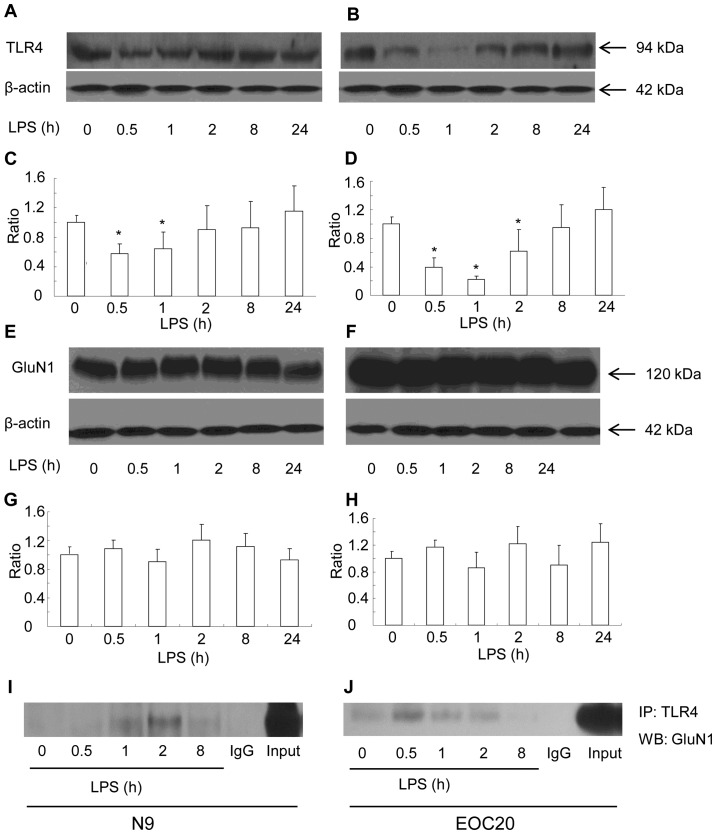Figure 1.
Lipopolysaccharide (LPS) triggers interaction of Toll-like receptor 4 (TLR4) and glutamate receptor N-methyl-D-aspartate subunit 1 (GluN1) in N9 and EOC 20 microglial cells. N9 (A and E) and EOC 20 (B and F) microglial cells were treated with LPS (1 µg/ml) for various durations. Cell surface expression of TLR4 was blotted with anti-TLR4 (A and B, top panel). Total cell lysates were blotted with anti-GluN1 (E and F, top panel) or anti-β-actin (A, B, E and F, bottom panel). β-actin blots exhibited equal loading. Scanning densitometry values of western blotting for TLR4 (C and D) and GluN1 (G and H) were normalized by densitometry of corresponding β-actin bands and expressed as mean ± standard error of the mean. The mean was calculated from four independent experiments (n=4). *P<0.05 vs. prior to LPS treatment. Co-immunoprecipitation of TLR4 and GluN1 in N9 (I) and EOC 20 (J) microglial cells treated with LPS (1 µg/ml) for various durations. Anti-TLR4 immunoprecipitates were blotted with anti-GluN1. Similar results were obtained from three independent experiments (n=3).

